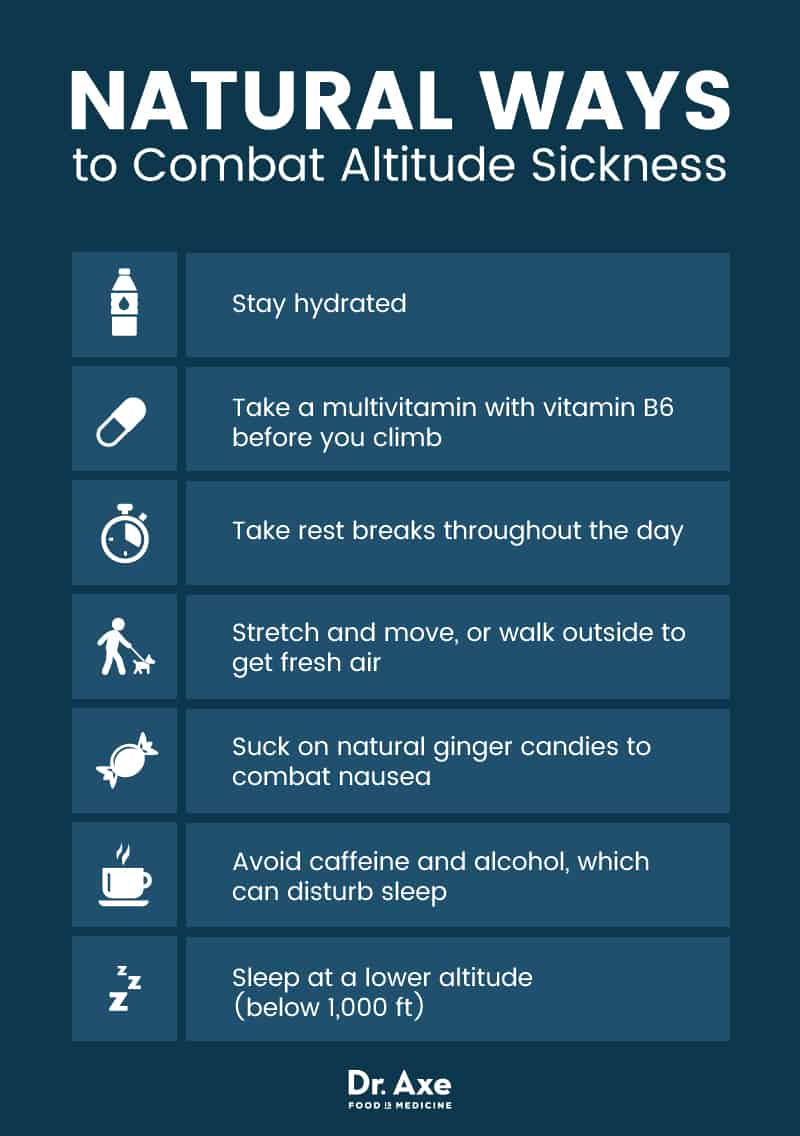This Dr. Axe content is medically reviewed or fact checked to ensure factually accurate information.
With strict editorial sourcing guidelines, we only link to academic research institutions, reputable media sites and, when research is available, medically peer-reviewed studies. Note that the numbers in parentheses (1, 2, etc.) are clickable links to these studies.
The information in our articles is NOT intended to replace a one-on-one relationship with a qualified health care professional and is not intended as medical advice.
This article is based on scientific evidence, written by experts and fact checked by our trained editorial staff. Note that the numbers in parentheses (1, 2, etc.) are clickable links to medically peer-reviewed studies.
Our team includes licensed nutritionists and dietitians, certified health education specialists, as well as certified strength and conditioning specialists, personal trainers and corrective exercise specialists. Our team aims to be not only thorough with its research, but also objective and unbiased.
The information in our articles is NOT intended to replace a one-on-one relationship with a qualified health care professional and is not intended as medical advice.
Traveling into Thin Air: Altitude Sickness Prevention (+ 4 Natural Treatments)
March 17, 2018

Have you ever felt dizzy or lightheaded after traveling somewhere high above sea level? You may have experienced altitude sickness (or “mountain sickness” as it’s sometimes called), a type of bodily stress caused by traveling to locations at a much higher altitude than your body is accustomed to. It’s a big concern for travelers — especially athletes who are training in high-altitude locations and people who enjoy activities like hiking and mountain climbing.
Not only do higher altitudes change the pressure your body feels and impact the amount of oxygen that’s made available to you, but many high-altitude environments are also cold, have low humidity, and may have increased ultraviolet radiation. All of these environmental factors affect how you feel — and sometimes they can lead to symptoms like nausea, trouble breathing and weakness.
Altitude sickness is definitely uncomfortable, but is it dangerous, or potentially even deadly? Although it’s rare, a severe case of altitude sickness can potentially be life-threatening. However, most people only experience mild or moderate altitude sickness symptoms, which should go away as the body has a chance to acclimate to its new location. Luckily, if you’re someone who likes to travel, there are certain prevention steps and natural remedies that can greatly lower the chances you’ll suffer from altitude sickness.
What Is Altitude Sickness?
Altitude sickness symptoms are caused by being at a higher elevation, or altitude, than your body is accustomed to. The word altitude refers to the “height of an object or point in relation to sea level or ground level.” (1) Most people experience altitude sickness when they are at altitudes of 8,000 feet (or about 2,440 meters) above sea level or higher. (2)
Symptoms of altitude sickness are most likely to begin shortly after entering a higher altitude than you’re accustomed to, especially if you do so quickly (such as after traveling in an airplane). The underlying reason that your body might respond negatively to being at a high altitude is due to the barometric pressure dropping and there being less oxygen available the higher you go above sea level. The higher you go above the Earth’s surface, the less dense the air is, and the harder your body has to work to take in enough oxygen.
What are some of the highest-altitude locations throughout the world that are notorious for provoking altitude sickness? These include popular climbing/hiking destinations like: (3)
- Cuzco (11,000 feet or 3,300 meters above sea level)
- La Paz (12,000 feet or 3,640 meters high)
- Lhasa (12,100 feet or 3,650 meters high)
- Everest Base Camp (17,700 feet or 5,400 meters high)
- Kilimanjaro (19,341 feet or 5,895 meters high)
Signs and Symptoms
There are three primary types of altitude sickness: (4)
- Acute Mountain Sickness (AMS) — This is the most common type of altitude sickness, which according to some studies may affect about 25–27 percent of all people traveling above 9,800 feet (3,000 meters). Other studies have found that up to 53 percent of people developed acute mountain sickness when traveling above 13,800 feet (4,232 meters). It’s not as dangerous as the two other types, but can sometimes progress and become worse.
- High Altitude Cerebral Edema (HACE) — This is a severe progression of AMS and is rare but serious. It happens when the brain swells with fluid, which disrupts normal cognitive functioning and is considered an emergency. Swelling in the brain can quickly cause damage to brain tissue. While it doesn’t happen very often at all, HACE can become dangerous if not treated within 24 hours. It’s recommended that anyone with HACE descend to lower ground immediately to prevent fatal symptoms.
- High Altitude Pulmonary Edema (HAPE) — HAPE is also rare and sometimes occurs with AMS or HACE. It develops when the lungs become swollen and filled with fluid, disrupting respiratory functions due to constriction and pressure. This tends to affect people going above 14,000 feet (4,270 meters). The most obvious signs are breathlessness even at rest, weakness and cough. Like HACE, if not treated HAPE can be fatal. It’s recommended that anyone with HACE get treated immediately with oxygen and descend to lower ground.
How dangerous is altitude sickness?
You can see that depending on the type, it can be very serious or even fatal. Mild-to-moderate altitude sickness symptoms are sometimes said to mimic those of the flu or even a hangover due to drinking too much alcohol. Symptoms tend to occur within hours after arrival at a high altitude (usually between two–12 hours) and tend to get worse overnight or when trying to sleep.
The most common altitude sickness symptoms include: (5)
- Headaches, which are sometimes severe
- Nausea or vomiting
- Loss of appetite
- Sleep disturbances
- Dizziness
- Shortness of breath and easily becoming exerted
- Fatigue, low energy levels
- Irritability
- Pallor and paleness
- Inability to exercise
- Loss of coordination and disorientation
- In the case of HACE, severe drowsiness, confusion, poor coordination, difficulty with balance and walking. Some may also experience memory loss, hallucinations and psychotic episodes
- In the case of HAPE, lots of trouble breathing, coughing and wheezing, tightness in the chest, confusion, irritability and sometimes the feeling of suffocating
How long does it take to recover from altitude sickness and adjust to high altitudes?
Most people need about two to five days to acclimate and feel better, depending on the kind of altitude sickness they have. AMS symptoms usually decrease within two to three days. If possible, it’s best to stay at an altitude of about 8,000–9,000 feet for several days to adjust before continuing to ascend up to higher altitudes.
Causes and Risk Factors
Altitude sickness is caused by the body experiencing hypoxic stress — a condition in which the body or a region of the body is deprived of adequate oxygen supply at the tissue level. The severity of altitude sickness depends on: how high of an altitude you reach, your rate of ascent, and the duration of the exposure.
Risk factors for experiencing altitude sickness include:
- Ascending to a high altitude quickly.
- Being in not only a high altitude location, but also one that is very cold and uncomfortable.
- Doing intense physical activity/training once at a higher altitude (especially within the first day).
- Sleeping at a higher altitude, rather than only doing a day-trip and later returning to lower ground.
- Having had altitude sickness before.
- Having a family history of altitude sickness, since genetics seem to predispose some people more than others.
- Being under the age of 50. Younger adults and children seem to have an increased risk.
- Existing medical conditions like lung disease, heart disease or diabetes are not risk factors for altitude sickness, but hypoxic stress can complicate these conditions, so always be cautious.
- Physical fitness has also not been shown to protect you from altitude sickness.
Conventional Treatments
If you suspect you might be suffering from altitude mountain sickness (AMS), it’s not totally necessary to get medical help or to receive a diagnosis. Usually acute mountain/altitude sickness is diagnosed by observing symptoms.
Even without treatment for AMS, you should start feeling better within several days. How does your body adjust to high altitudes? Many people will gradually get used to being at elevations up to 3,000 meters (10,000 feet) within a few days as their body adapts to getting less oxygen. (6) This process is known as acclimatization (defined as when a human or organism adjusts to a change in its environment, such as altitude, temperature, humidity, photoperiod, or pH, in order to survive). However, it’s almost impossible to get acclimated to very altitudes of 17,000 feet (or 5,100 meters), which requires bottled oxygen to survive.
Acclimatization to higher altitudes happens when your body goes through several changes, including:
- Increasing respiration.
- Producing more red blood cells to help carry oxygen.
- Allowing pulmonary capillaries to increase to help bring more blood to the lungs.
- Increasing production of enzymes that help release oxygen from hemoglobin.
If someone is unable to acclimate to a higher altitude and develops symptoms that can be potentially dangerous, then immediate management of the condition is required. Conventional treatments for severe altitude sickness (especially HACE or HAPE) can include:
- Use of oxygen if available
- Descent of more than 300 meters as soon as possible
- In some cases, use of medications called prophylactic treatments, including acetazolamide and dexamethasone are used to reduce the risk of developing severe symptoms. These have been shown to reduce acute mountain sickness more effectively compared with placebo versions. (7) Some of these drugs work by helping to make the blood more acidic, which drives ventilation (breathing) and helps with acclimatization. Dexamethasone also helps reduce swelling and can be used to protect the brain during HACE.
Prevention Tips
What can you do to prevent altitude sickness?
How to lower the chance that altitude sickness will happen to you:
1. Travel/Ascend Upward Slowly
The very best way to avoid to getting altitude sickness is to transition to a higher altitude slowly. One study found that the prevalence of acute mountain sickness was 58 percent with rapid ascent and no prior pre-exposure, 29 percent with pre-exposure only, 33 percent with slow ascent only, and 7 percent with both pre-exposure and slow ascent. While it’s not always possible or realistic, your body has a better chance of coping with an altitude change if you walk up to a higher altitude rather than flying or driving there. If you’re hiking up a mountain and worried about altitude sickness, experts recommend that starting at a point that is below 10,000 feet (3,048 meters) and walking up if possible. Slowly acclimating greatly helps to prevents altitude illness, improves sleep, and increases comfort and well-being. Try only increasing your altitude by 1,000 feet (305 meters) per day and plan to take rest days along the way.
2. Don’t Overexert Yourself
If you do fly or drive to a higher altitude, do not overexert yourself, especially for the first 24 hours. It’s common for physical performance to suffer when you reach a new altitude as you need time to adjust. You’ll likely have a harder time breathing and feel fatigued more easily, so it’s best not to push yourself or train hard for the first two to three days. (8)
3. Watch For Signs and Symptoms
Pay attention to how you feel when you reach a higher altitude. Your symptoms should begin getting better within two to three days, not worse. If you develop symptoms of HACE or HAPE then descend right away to prevent symptoms from worsening.

Natural Remedies for Symptoms
How do you treat altitude sickness? If you’ve developed symptoms that sound altitude sickness shortly after traveling, try the natural remedies below to help manage symptoms. Remember that if you have AMS (but not HAPE or HACE) then you should also feel better with time, as your body has a chance to get used to the change in pressure and oxygen.
1. If Possible, Sleep at a Lower Altitude
A common saying about climbers/hikers is to “climb high and sleep low,” meaning it’s safer to sleep at altitudes lower than 1,000 feet. This is one reason why day trips up to higher altitudes are encouraged, since you can still climb high during the day, then break to descend down at night so you get better sleep.
If you’re struggling to sleep, regardless of what altitude you might beat, some of these natural sleep aids can help:
- Avoid caffeine and alcohol, which can disturb sleep.
- Consume complex carbs to help produce tryptophan, which can make you feel sleepier, such 100 percent whole grain oats, brown rice, corn or quinoa.
- Take a magnesium supplement, or one that combines calcium with magnesium.
- Use relaxing essential oils such as bergamot oil and lavender oil, in addition to sandalwood, frankincense and mandarin.
2. Fight Headaches and Pain
Strong headaches are commonly one of the first symptoms of altitude sickness to appear. To ease the pain and prevent discomfort from getting worse, try natural headache remedies including:
- Applying peppermint essential oil.
- Staying hydrated and avoiding too much salt.
- Taking a magnesium supplement.
- Stretching and moving, or walking outside to get fresh air.
- Taking breaks throughout the day to rest.
Other natural painkillers include applying a warm compress to tight areas, such as your neck or shoulders, and applying a cream containing cayenne to stimulate your body’s circulation and help reduce inflammation.
3. Combat Nausea
If you’re struggling with an upset stomach, loss of appetite or vomiting due to altitude sickness, try some of these strategies for getting rid of nausea:
- Chew on ginger sucking candies, ginger root, or, if possible, drink ginger or chamomile tea. You can also apply ginger essential oil to your chest combined with a carrier oil such as coconut oil.
- Take a multivitamin containing vitamin B6 before you climb, which can help curb nausea.
- Use lemon and peppermint essential oil, or possibly cannabis oil. Try rubbing 1 to 2 drops into the back of your neck and bottoms of the feet, or add several drops to a cool compress and place it on your head.
- Rest and try to get enough sleep. Avoid strenuous activity.
- Stay hydrated and consider drinking something that provides electrolytes, such as coconut water.
4. Helpful Supplements and Foods
Can certain foods or vitamins help with altitude sickness? Some research indicates that taking ginkgo biloba may help reduce the risk of acute mountain sickness. It’s unlikely that you’ll have access to lots of fresh foods while climbing or hiking, but do your best to avoid lots of high-sodium and synthetic, processed foods that can make digestion harder.
Final Thoughts
- There are three types of altitude sickness: Altitude Mountain Sickness (AMS), High Altitude Cerebral Edema (HACE) and High Altitude Pulmonary Edema (HAPE). AMS is the most common type and least severe, while HACE and HAPE can sometimes be life-threatening.
- In rare, severe cases, altitude sickness (HACE and HAPE) can be dangerous and even deadly. If you experience any of these symptoms seek help right away (such as with using oxygen) and descend to lower ground: sudden loss of breath, disorientation, wheezing and chest pains, severe fatigue and feeling like you’re suffocating.
- Get plenty of rest and sleep at a lower altitude, if possible, try essential oils and natural pain killers for pain and headaches, take a multivitamin with vitamin B6 or suck on natural ginger candies to soothe nausea and avoid high-sodium, processed foods if you are experiencing altitude sickness symptoms.








